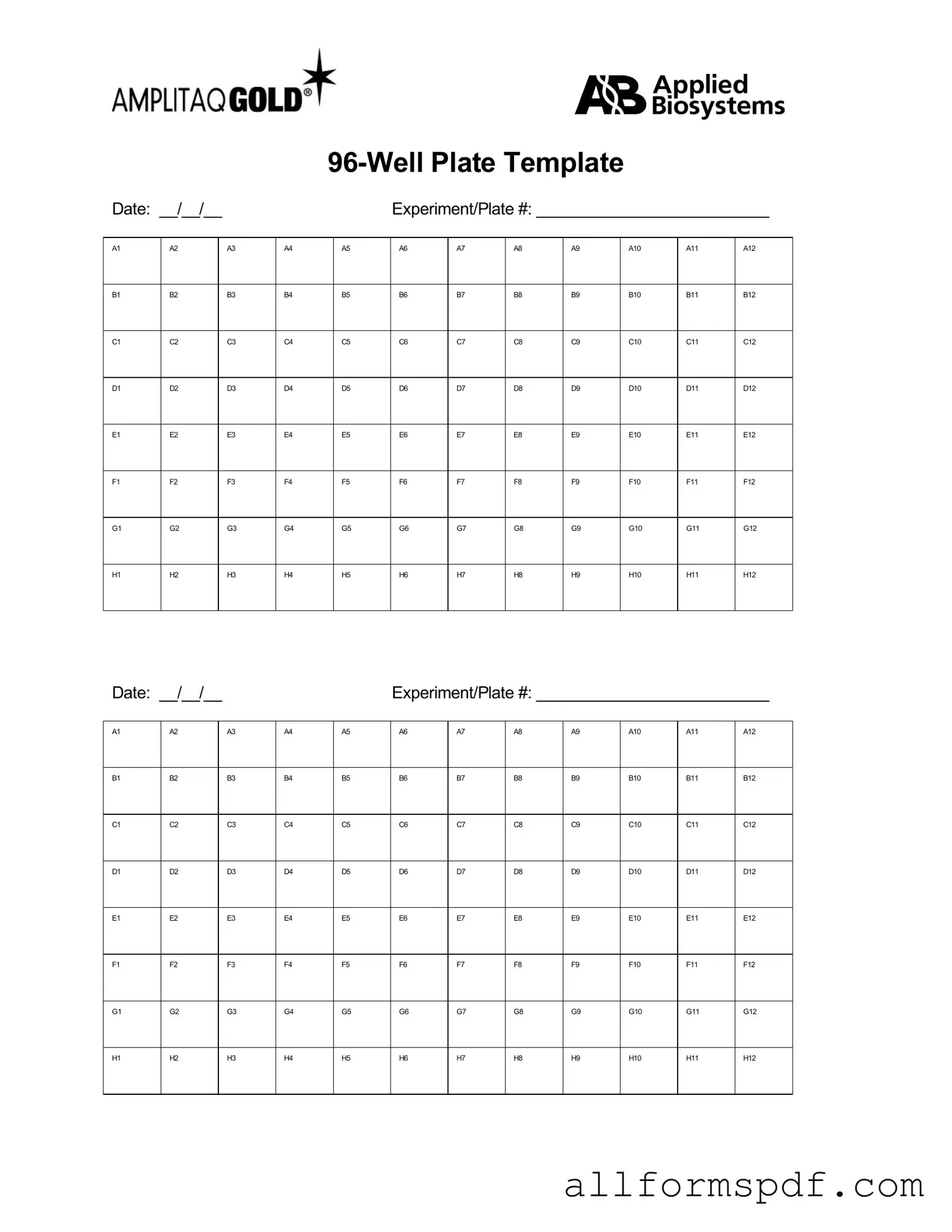Filling out the 96 Well form can be a straightforward process, but many people make common mistakes that can lead to complications later on. One frequent error is failing to double-check the information provided. It's easy to overlook small details, but even a minor mistake can cause delays or issues with processing.
Another mistake involves not following the specific instructions for each section. Each part of the form has its own requirements, and skipping steps or misinterpreting the guidelines can result in incomplete submissions. Always take the time to read through the instructions carefully before starting.
Additionally, some individuals forget to sign and date the form. This may seem like a minor detail, but without a signature, the form may be considered invalid. Remember, your signature serves as a confirmation that the information provided is accurate and complete.
Inaccurate data entry is another common pitfall. Whether it’s a typo in a name or an incorrect date, these errors can create significant problems. It’s advisable to take a moment to review all entries before submitting the form.
People also sometimes neglect to provide all required attachments or supporting documents. Each form often requires additional paperwork to back up the information provided. Missing these documents can lead to processing delays or even rejection of the form.
Finally, a lack of clarity in the responses can cause confusion. Using vague language or abbreviations that are not widely understood can lead to misinterpretation. Clear, concise answers help ensure that the form is processed smoothly and efficiently.
